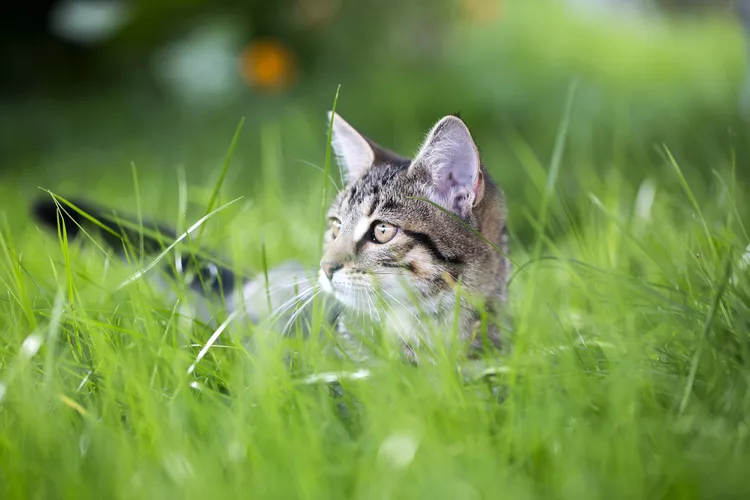Should You Allow Your Indoor Cat to Go Outside?

Is your indoor cat itching to go outside?
It’s normal as a cat parent to feel a bit guilty about keeping your cat indoors all of the time, especially if they show interest in going outside. Many cats 'ask' to go outside without really understanding what awaits them outdoors. Replicating the outdoor experience exactly can be challenging though many pet parents can create a stimulating indoor environment for their cats through the use of enrichment activities, plenty of windows and cat-friendly plants and some outdoor solutions we discuss below.
Your cat’s safety should always be your first concern, however, and there are definitely some big risks involved in allowing your indoor cat to go outside. We’re breaking those down below, plus some helpful tips for letting your cat explore the outdoors safely.
Benefits of Indoor vs. Outdoor Cats
Many cat rescues require potential adopters to agree to keep their cats inside, and many veterinarians recommend the same. There’s some pretty good reasoning behind this, particularly when it comes to your cat’s health and safety.
Indoor cats tend to live much longer lives than outdoor cats—about 10 to 15 years instead of just two to five years, according to UC Davis Veterinary Medicine. That’s because there are a lot of outdoor hazards that cats can be exposed to, ranging from parasites and disease to cars, predators like coyotes, toxins, and other animals.
When you keep your cat indoors, you shield them from these potential harms. You also spend considerably more time with your cat, which provides you with the opportunity to identify any health issues sooner rather than later. Other dangers that you avoid by keeping your cat inside include less risk that they’ll get lost or picked up by animal control or other humans. You also do your part to help protect natural wildlife, since even well-fed cats have a tendency to hunt birds and other small prey and can have a serious negative impact on wildlife in your surrounding area. Domestic cats in the US alone are estimated to kill over 2 billion birds annually.
If you need more convincing that it’s better to keep your cat inside, consider just how many more risks there are than benefits to letting a cat roam freely in the outdoors:
More exercise and space to run
Increased access to fresh air and sunshine
New and interesting smells
More susceptible to illness, injury, or death from animals, vehicles, toxins, parasites, and more
May kill outdoor wildlife
How to Let Your Cat Explore Outdoors—Safely
A cat who spends all of their time inside can still enjoy many of the benefits of the outdoors by having access to a sunny windowsill. Put a cat tree in front of your cat’s favorite window or hang a hammock bed so that they have an extra cozy place to sit and watch the birds and squirrels. And when the weather allows (and if you have a screen in place), open the window so they can take in the breeze as well.
If you still want your cat to go outside, make sure to do it as safely as possible. This includes:
- Teaching your cat to walk outdoors with you on a harness and leash
- Creating or purchasing a 'catio' or mesh cat enclosure (you can find a ton of roomy and secure outdoor cat enclosures online).
- Making sure to keep your cat up to date on flea/tick and heartworm medications, and letting your vet know that they spend time outdoors so they can have any necessary yearly screenings done.
- Always supervising your cat’s outdoor time, and never letting them roam unattended.
There is definitely a happy medium between keeping your cat indoors all of the time and exposing them to the dangers of life as an outside cat. Depending on your cat’s personality, you may even be able to leash train them for walks and other adventures, or you may just have a friendly companion to sit in the backyard with you sometimes and soak in the sunshine.
Either way, make safety a top concern and read your cat’s cues. Many cats are perfectly satisfied with a wholly indoor life, while others may be comfortable slowly adjusting to walking outdoors on a harness and leash or exploring a small patch of grass under your direct supervision. Use common sense—and when in doubt, err on the side of safety by keeping your cat indoors.